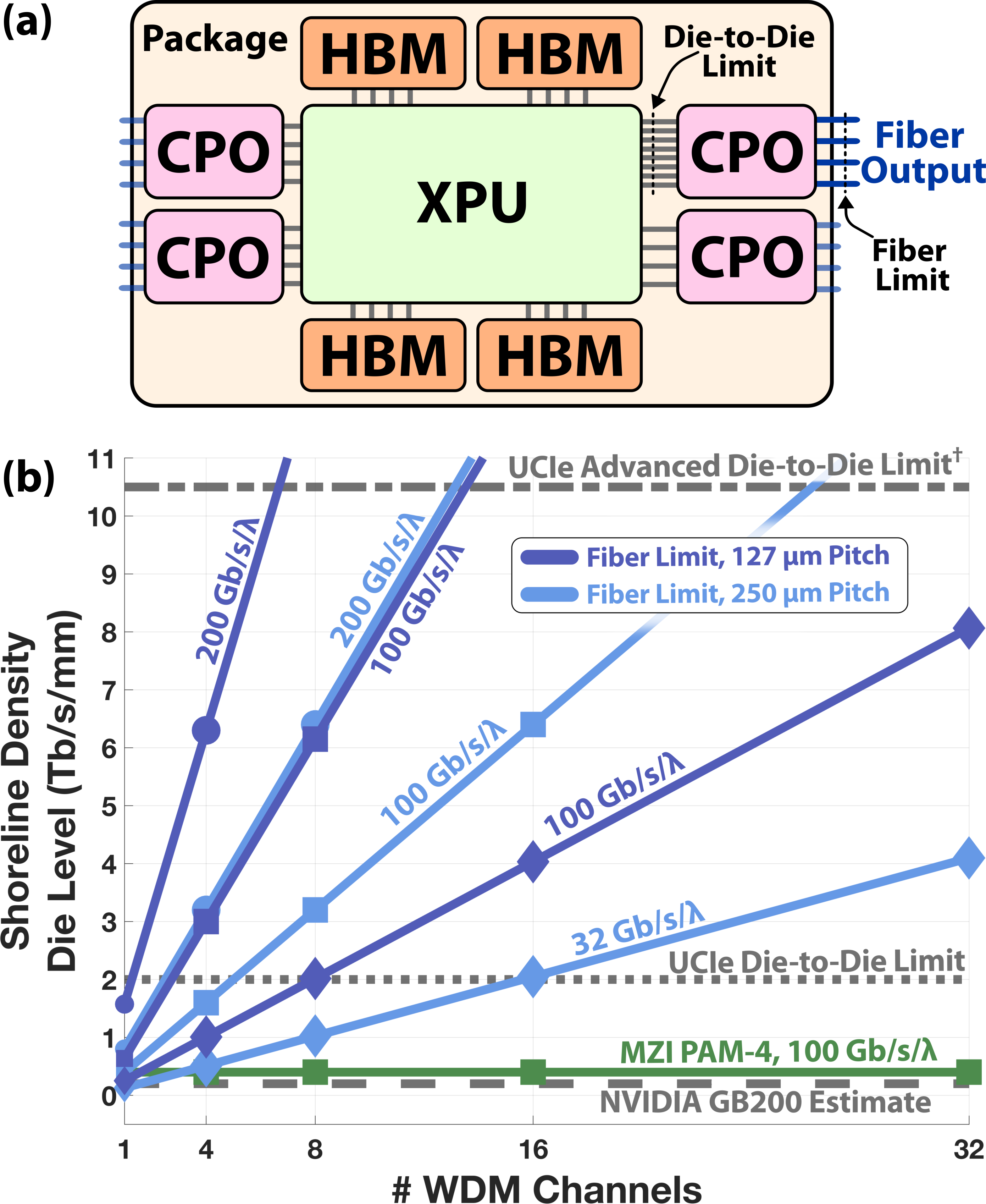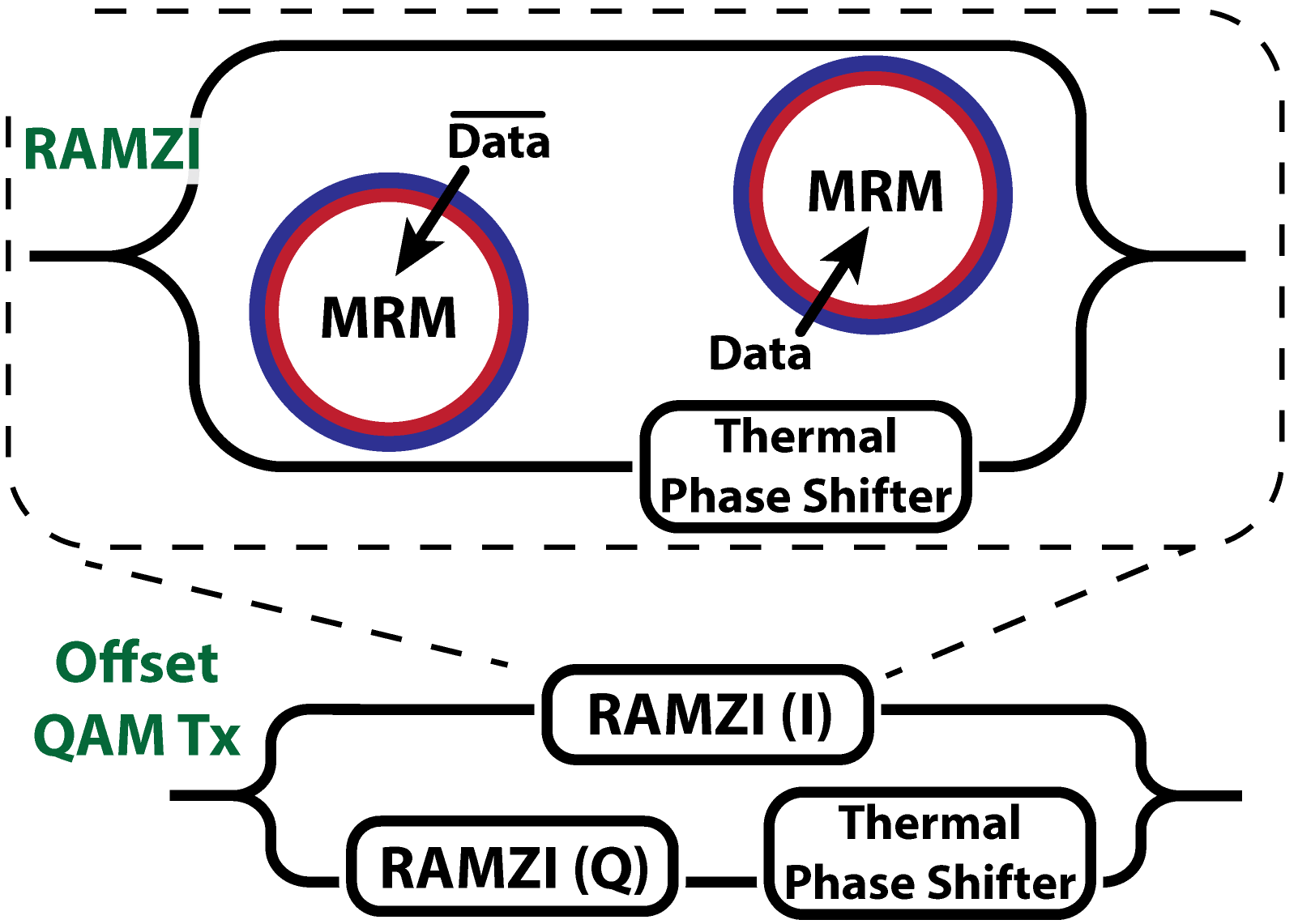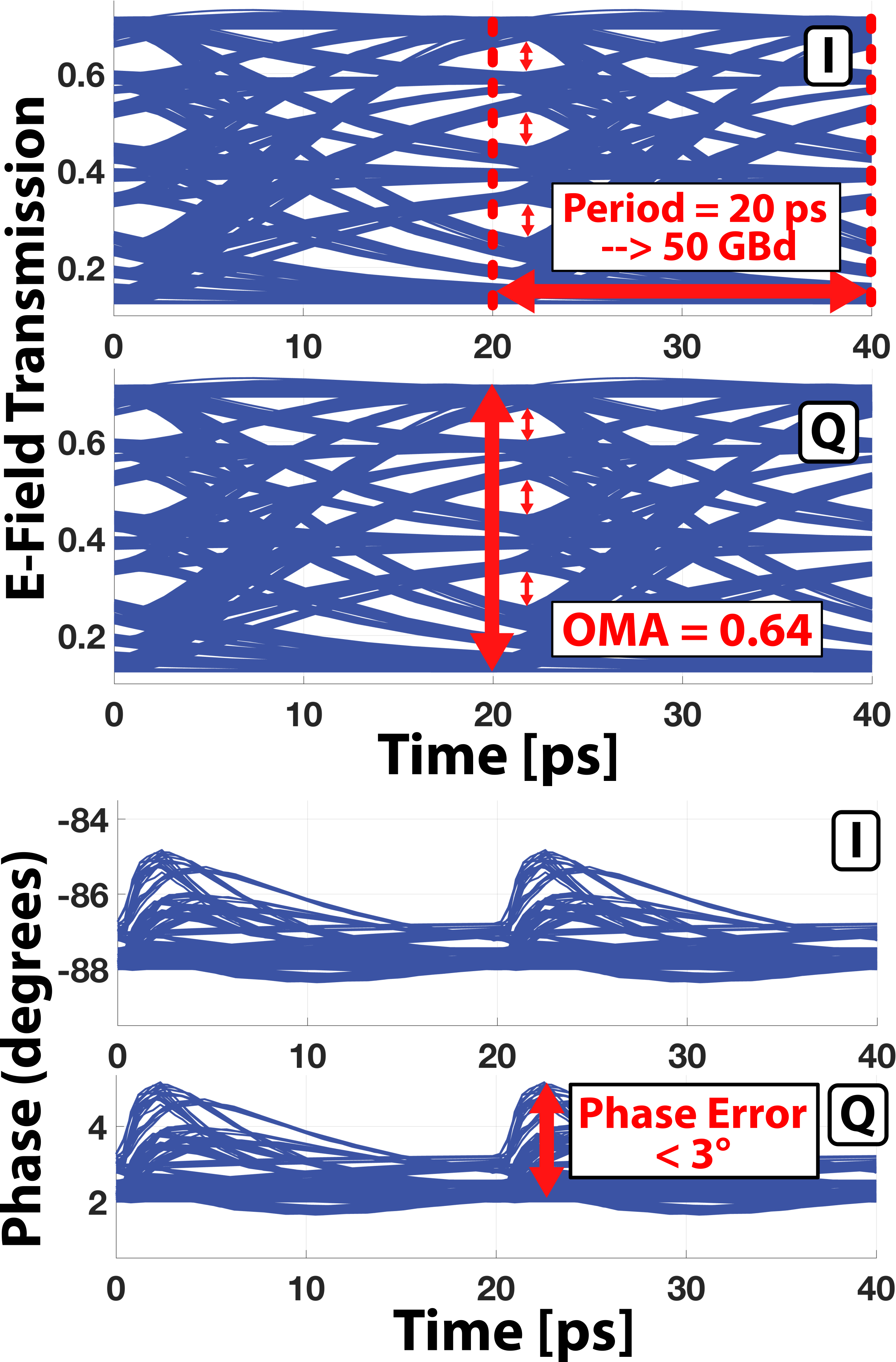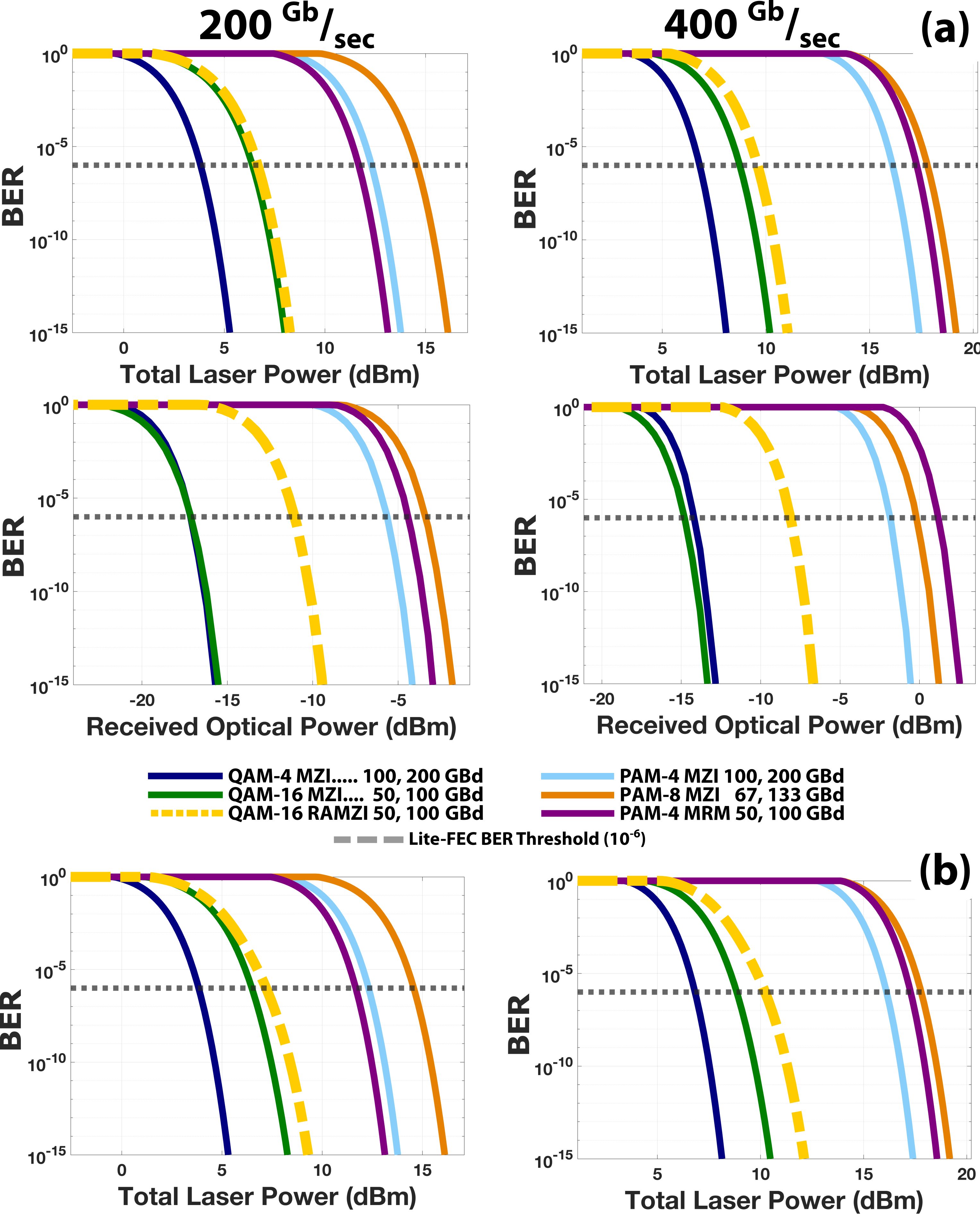- The paper presents a novel RAMZI-based offset-QAM-16 transmitter design that leverages MRMs to achieve 400 Gb/s performance.
- Simulation results show a normalized OMA of 0.64 per dimension with controlled phase noise and robust thermal management.
- Comparative BER analysis demonstrates that the design meets target pre-FEC requirements at lower optical powers with a significantly reduced footprint.
C2PO: Coherent Co-packaged Optics Using Offset-QAM-16 for Beyond PAM-4 Optical I/O
Introduction
The paper, "C2PO: Coherent Co-packaged Optics using offset-QAM-16 for Beyond PAM-4 Optical I/O" (2506.12160), presents a method to achieve high data rates of 400 Gb/s through the development of a coherent co-packaged optics (CPO) using offset-QAM-16 modulation format. The design leverages the microring resonator (MRM) technology which is inherently compact and energy-efficient, offering potential improvements for data centers' GPUs and network switches by extending beyond the current limitations of pulse amplitude modulation (PAM) systems.

Figure 1: Illustration of future System-in-Package (SiP) with CPO for optical I/O and comparison of shoreline density for CPO solutions.
Proposed MRM-Based Coherent Transmitter
The proposed system employs a novel Ring-Assisted Mach-Zehnder Interferometer (RAMZI)-based offset-QAM-16 transmitter architecture. This architecture features MRMs which are configured as phase-constant amplitude modulators. The RAMZI-based offset-QAM transmitter is able to maintain high amplitude while ensuring interference from phase noise remains manageable. The paper demonstrates how offset-QAM signaling enhances carrier-phase recovery which is typically challenging in traditional QAM systems without offset.

Figure 2: Proposed RAMZI-based offset-QAM Transmitter and RAMZI photonic circuit.
Simulation Methodology and Results
The simulation of the proposed transmitter, as modeled using GF45SPCLO process in Cadence Virtuoso, indicates significant improvements. The RAMZI circuit achieves a normalized Optical Modulation Amplitude (OMA) of 0.64 per dimension while maintaining negligible phase error. The design is optimized for thermal and electrical parameters ensuring constant phase and amplitude variations within allowable limits.

Figure 3: Simulated electric field amplitude and phase eye diagrams for the proposed RAMZI-based offset-QAM transmitter at 50 GBd.
Full Link-Level Bit Error Rate (BER) Modeling
Link-level simulations compare against state-of-the-art MZM-based and MRM-based PAM-4, PAM-8, QAM-4, and QAM-16 systems. The results underscore that the proposed RAMZI-based offset-QAM-16 (ROQ-T) can maintain target pre-FEC BER at lower optical powers relative to existing PAM systems while matching laser power efficiency with QAM-based solutions. This characteristic renders it highly applicable to power-sensitive data center environments.

Figure 4: Simulated BER as a function of laser optical power for a single channel with phase noise considered.
Thermal Stability and Experimental Results
The thermal stability of the MRMs, crucial for maintaining performance during operation at high power levels, is validated through meticulous thermal simulations ensuring no instability at operational powers. Experiments with the GF45SPCLO process demonstrate 25 Gb/s MRM-based offset-QAM-4 proving the viability of the approach with demonstrated I/Q eye-diagrams.

Figure 5: Photo and diagram of fabricated chip in GF45SPCLO, including optical transmitter and photonic circuits.
Comparison to State-of-the-Art Optical QAM-16 Transmitters
Compared to state-of-the-art solutions, the proposed ROQ-T offers comparable power efficiency and datarate with significantly reduced area requirements—10-100× lower than conventional solutions. The efficiency and datarate enhancements position it as an advantageous alternative to PAM-4 MRM transmitters.
Conclusion
This research underscores the implementability and utility of CPO systems leveraging novel RAMZI architectures for offset-QAM-16 modulation. Through comprehensive simulation, modeling, and experimental validation, the work sets a foundation for future development towards making ultrafast coherent CPO a ubiquitous standard in data centers. Further developments are aimed at scaling multiplexing across multiple channels and integrating closed-loop thermal control systems to enhance robustness and optimize performance across diverse operational conditions.




